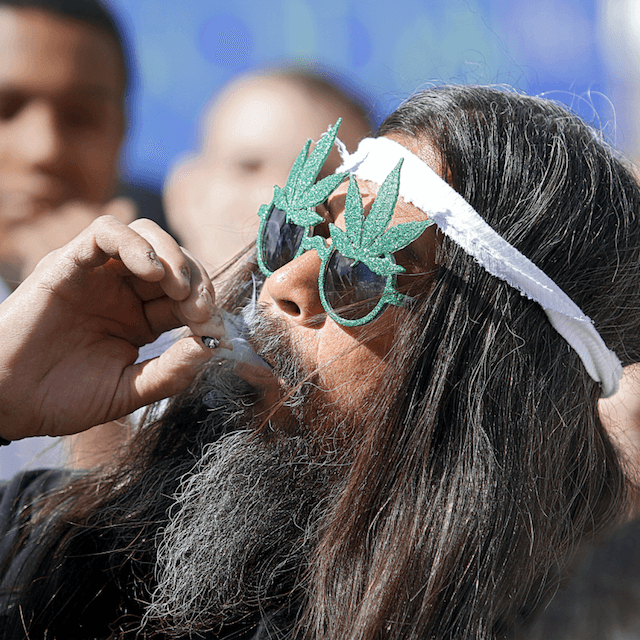Four out of five pre-med students agree: smoking weed does something to your body. What we can’t seem to get the government to agree to however, is the viability of medical marijuana.
The science behind your brutal case of the munchies
It is unknown who discovered marijuana consumption causes a psychoactive reaction in the body. Also, unknown: What were Bill Clinton’s favorite munchies? And were there any dollar-store iced teas around to quench Jeb Bush’s thirst?
What is clear however is that the marijuana plant was used not only for the physical qualities outlined in our first article but for the mind and body.
So why does ingesting some plant make you want to eat cookies and your parents not angry, just disappointed? The “high” feeling one experiences after consumption are a result of these molecules bonding with specific receptors in the brain.
Marijuana also affects the peripheral nervous system by bonding with receptors along the spine to help decrease pain associated with nerve damage. Basically, its medical uses are for mind and body.
You can thank the cannabinoids’ delta-9-tetrahydrocannibol (THC) and cannabidiol (CBD), along with the 483 other known compounds found in the plant, for making your favorite foods, movies, and songs even better. With great power comes great responsibility and there are some possible side effects, including: a decrease in short-term memory, dry mouth, impaired motor skills, red eyes, paranoia or anxiety.
While some people claim they can’t feel the effects, it only takes four seconds from inhalation for marijuana to reach the brain. Edibles can take up to 30 minutes, and the person’s digestive system greatly affects how one reacts to delicious brownies. These cannabinoids can be measured in the blood, urine, hair, saliva and sweat of people who consume the product on a semi-frequent basis.
So, if you are going to get tested, maybe pull a Gattaca (Don’t do this).
Some pretty sticky paper
As you definitely remember, the oldest known medical use of marijuana dates back to China, as it was the Chinese who used hemp to create paper. Moving beyond some pretty sticky paper, some accounts even claim that Emperor Shen Nung taught people to value the plant as a medicine in 2737 BCE.
While the exact date of its first medical use isn’t known, the plant’s ability to combat symptoms from pain to nausea – similar uses as today it should be said – was widely apparent to ancient Chinese culture.
Fun fact: In Ancient China, marijuana was mixed with wine and used as an anesthetic, thus making emergency home surgery slightly less painful. All of these reasons help explain why marijuana is one of the 50 “fundamental” herbs in traditional Chinese medicine, and perhaps also explains why General Tso’s Chicken tastes so good.
Toke like an Egyptian
Heading west, scrolls have also been found documenting medicinal marijuana use in Ancient Egypt dating back to 1550 BCE. These scrolls note that the plant was used to treat “sore eyes” and even as a suppository for hemorrhoids (Preparation W, anyone?). Records across the ancient world show that beyond the physical uses of the plant, the consumption of it was part of medical and spiritual life.
As part of the spiritual record, India is the region that has the most continuous recorded use of the marijuana plant. Dating back to 1500 BC, the sacred text of Hindus, Rig Veda, highlights the uses of a substance called Soma, a drink believed to be based on marijuana.
During the holiday Mahashivratri (Night of Shiva or Great Night of Shiva), the consumption of Bhang is allowed. Bhang is a combination of almonds, spices, cold milk, sugar and the leaves of the marijuana plant. As part of the medical history of India, this concoction was used to cure many ailments including: fever, dysentery, sunstroke, congestion, and speech impairment.
[postquote]
Flash forward to Stratford-upon-Avon, England circa the 16th Century and the great William Shakespeare was suspected to be under the influence. References made in Sonnet 27 and 76 each make the reader wonder what sort of long strange trip it’s been for a plant that started in the Central Asian landmass.
Today, with the legality of marijuana still up in the air, our full medical attention is unable to be unleashed due to cumbersome and dated government regulations.
Our take
What we know based on limited study, is that people who use marijuana for medical reasons oftentimes find its therapeutic effects to be life changing.
Across the spectrum of medical uses, from alleviating the effects of chemotherapy to providing relief to children with seizures, we have only begun to scratch the surface of how it can be used for good.
However, rather than embrace these uses, we’ve taken a different path, one that seeks to demonize and regulate its use. In the next part of our series, we’ll explore how marijuana went from the third-largest U.S. crop to an illegal, if still widely used, substance over the course of a century.
Have something to add to this story? Comment below or join the discussion on Facebook.
Header image: Getty









































